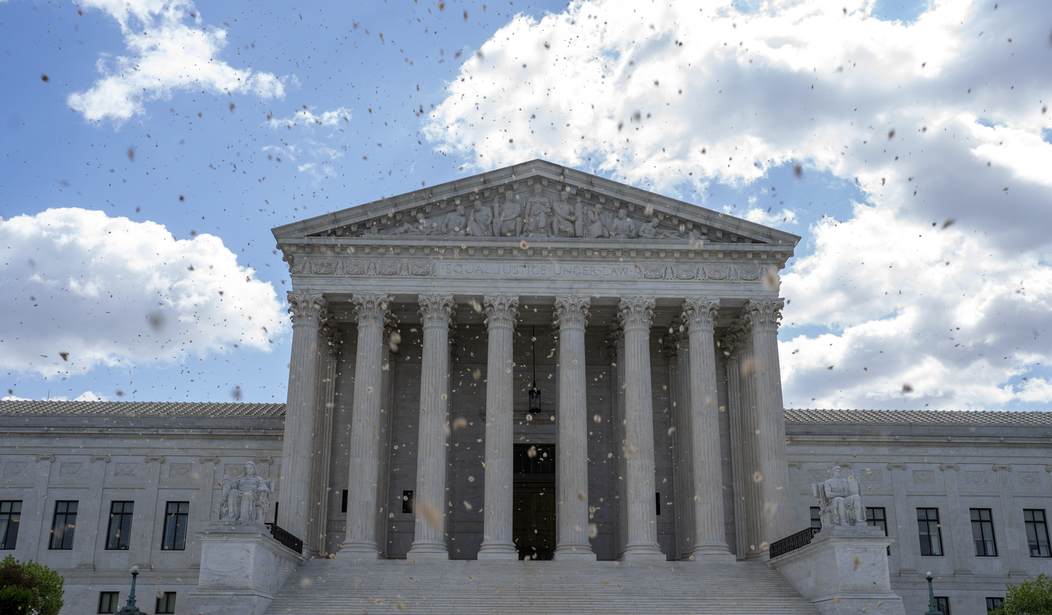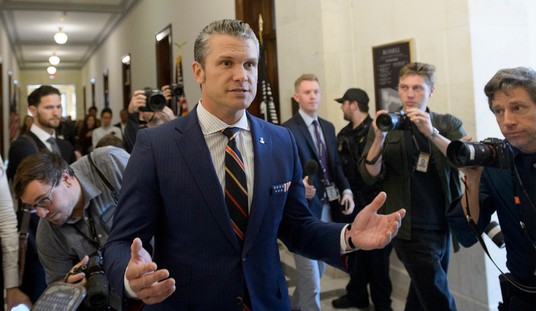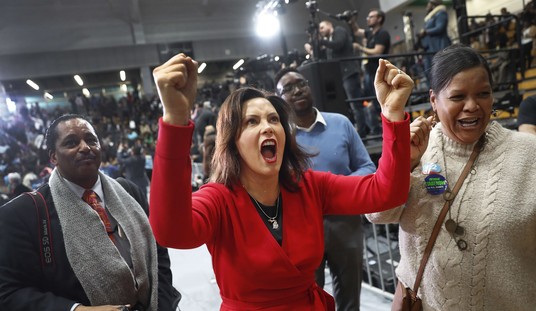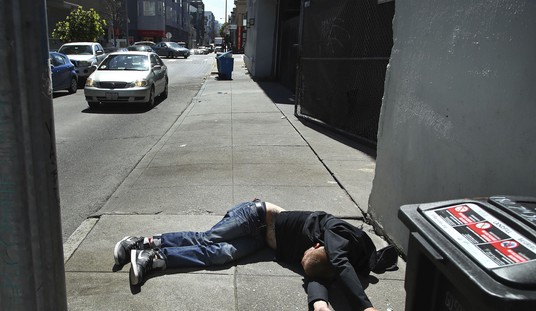Sometimes lost in the Red Team-Blue Team perspective on the Supreme Court’s rulings?
The Court’s decisions are not simply ideological exercises. There are real-world implications to the decisions they render.
The further removed their decisions are from the Constitution, the worse things get here in reality.
Quite often, it appears the Justices are steadfastly impervious to any awareness of the damage they are doing.
What’s especially illustrative thereof? When they say in their opinions that “X” is unconstitutional — but then bizarrely rule that “X” should be allowed to continue anyway.
Or even worse? They rule “X” unconstitutional. Then unconstitutionally pretend to be Congress — and unconstitutionally mandate “remedies” to the constitutional problems they’ve rightly identified.
To wit:
The Supreme Court Almost Rules Wisely. Almost:
“The following ruling showed the Court dipping its toe in the warm waters of Judicial Sanity – but then quickly withdrawing the digit.
“‘Supreme Court Says Over 200 Patent Judges Were Improperly Appointed:
“‘The Supreme Court ruled…(in United States v. Arthrex) that more than 200 administrative judges who hear patent disputes, some of them over billions of dollars, had been appointed in violation of the Constitution.’
“These judges are indeed unconstitutional. Because they are judges — in the Executive Branch. Which means the Executive Branch is pretending to be the Judicial Branch. And that’s a bit of a Separation of Powers problem.
“These alleged judges preside over the Patent Trial and Appeal Board (PTAB)….
“‘The solution, a fractured majority of the court ruled, was to give the director of the U.S. Patent and Trademark Office the power to review the judges’ decisions in cases….’
“Except that is NOT a solution to these PTAB judges being unconstitutional.
“The Court ruled these Executive Branch judges are illegal – because they are in the Executive Branch. But then posited as a ‘solution’ – having another member of the Executive Branch review their rulings.
“The Court’s ‘solution’ adds another layer of unconstitutional bureaucracy. It does not provide a remedy for the unconstitutionality the Court its own self identified.”
This is the Justices spilling their idiocy all over the country. And now we have to try to clean up their mess.
“This article discusses a number of issues of administrative law that must be addressed before the USPTO can proceed. The PTAB now resembles a poorly-maintained building—after decades of benign neglect, and more than a little old-fashioned cheating to evade work that’s required by the statute, a stress has induced a collapse.
“Essentially all judgments of the PTAB will be appealable and voidable for underlying procedural error under various administrative law statutes; very few have all the prerequisites to stick. Implementing Arthrex within the law will require substantial resources and significant new machinery within the USPTO, and some of that new implementation may be impossible until a confirmed Director is in place because of limits under the Vacancies Reform Act….
“Implementing Arthrex within the law will require substantial resources and significant new machinery within the USPTO, and some of that new implementation may be impossible until a confirmed Director is in place….Until then, a great many of the PTAB’s decisions will be challengeable….
“It will take at least a year of regulatory reconstruction to implement Arthrex on a solid foundation that will allow the PTAB’s judgments to survive appellate review. Until then, a great many of the PTAB’s decisions will be challengeable for various past and future failures of the USPTO to observe requirements of law.”
Get all that? The Court’s ruling has — rightly — thrown every PTAB ruling since its 2012 inception into challengeable question. Because, as the Court noted, the PTAB is unconstitutional.
However: The Court’s unconstitutional “solution” doesn’t fix the problem — it creates a whole raft of new ones.
The US Patent and Trademark Office (USPTO) won’t now end the unconstitutional PTAB. Because the Court bizarrely left it intact.
The USPTO will instead now waste more than a year and a lot of coin trying to erect a new PTAB facade to meet the Court’s “remedy” mandate.
During said facade’s construction, each and every new PTAB ruling will be open to the same challenges the old ones face. Because, of course, it’s still the “old” PTAB — not the Court-mandated “new” one.
All of which is inconceivably destructive to the entirety of the US patent system — and the US economy.
The USPTO issues a patent (which ain’t an easy lift for the patent applicant).
The USPTO’s “old” PTAB then dumps the patent the USPTO just issued.
Then the “old” PTAB’s ruling itself is challenged — because it ain’t yet the “new” PTAB.
Meanwhile, no new US inventions are brought to market, because the inventors are mired in multiple rounds of USPTO-PTAB idiocy. All thanks to the Supreme Court’s idiocy.
Oh: And when the “new” PTAB is finally finished? We’ll be treated to a whole new round of lawsuits as the “new” PTAB is tested against the Court’s unconstitutional mandate.
And still, no new US inventions are ever brought to market because the inventors are mired in yet another round of USPTO-PTAB idiocy. All thanks to the Supreme Court’s idiocy.
Or the Court could have done what they should have done — ended the unconstitutional PTAB. Which it rightly identified as unconstitutional. And then NONE of this idiocy to follow would occur.
The US economy would be so much the better for it.
But all of this idiocy will follow.
And Communist China’s economy will be so much the better for it.
China Makes Itself More Attractive for IP Creation – The US Makes Itself Much Less So












Join the conversation as a VIP Member